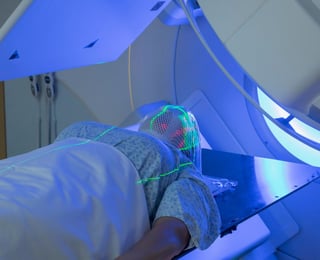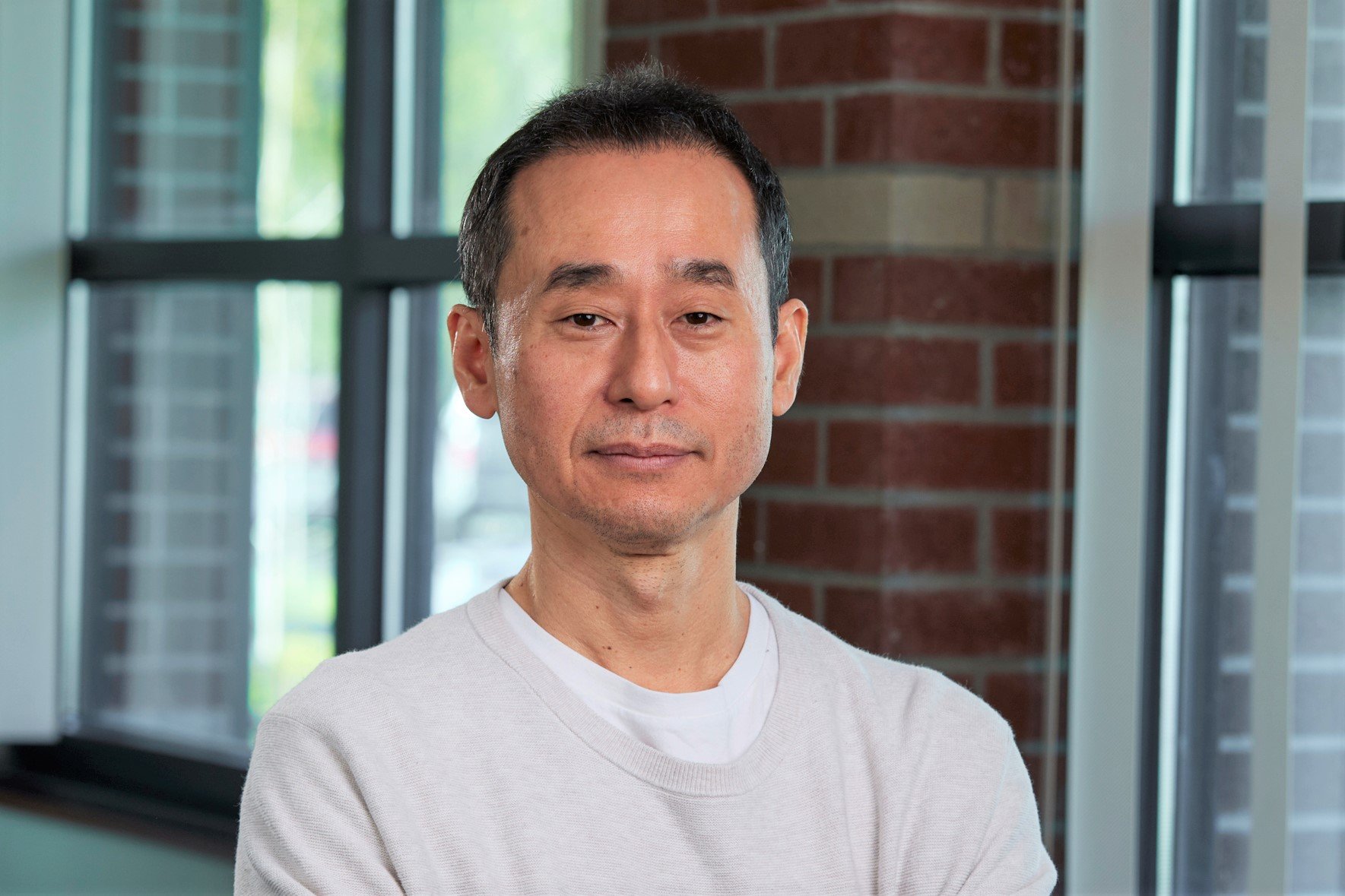Head and Neck Cancer Care at WVCI

What are Head and Neck Cancers, and Who Treats Them?
Cancers that are known collectively as head and neck cancers usually begin in the squamous cells that line the moist, mucosal surfaces inside the head and neck, such as inside the mouth, nose, and throat. These squamous cell cancers are often referred to as squamous cell carcinomas of the head and neck.
Head and neck cancers can also begin in the salivary glands, but salivary gland cancers are relatively uncommon. Salivary glands contain many types of cells that can become cancerous, so there are many different types of salivary gland cancer.
If you or a loved one has been diagnosed with head or neck cancer, know that we are here for you. Our highly skilled medical oncologists, radiation oncologists, and compassionate staff will support you and your family every step of the way. If you have questions about a head and neck diagnosis or would like a second opinion, reach out to the cancer care team at WVCI.
Common Types of Head and Neck Cancers
Cancers of the head and neck are further categorized by the area of the head or neck in which they begin.
Less Common Head and Neck Cancer Types
Paranasal Sinuses and Nasal Cavity
The paranasal sinuses are small, hollow spaces in the bones of the head surrounding the nose. The nasal cavity is the hollow space inside the nose. A variety of cell types live in this region of the head that can become malignant. Squamous cell carcinoma is the most common type of paranasal sinus and nasal cavity cancer.
Nasopharynx
The nasopharynx, the upper part of the pharynx, is a box-like passageway located just above the roof of the mouth. This passageway allows air to go through the nose into the windpipe and through to the lungs. This type of head and neck cancer is categorized when malignant cells form in the tissues of the nasopharynx.
Salivary Glands
The major salivary glands are on the floor of the mouth and near the jawbone. The salivary glands produce saliva. These glands contain various types of cells that may become cancerous, so there are many different subtypes of salivary gland cancer.
Oropharynx
The oropharynx is the middle part of the throat that includes the back third of the tongue, the soft palate, and the side and back walls of the throat and tonsils. This head and neck cancer type develops when malignant cells form in the oropharynx’s tissues.
Find More Information About Head and Neck Cancers
Our cancer care specialists are dedicated to helping head and neck cancer patients throughout the Willamette Valley and central coast, including Albany, Corvallis, Eugene, Florence, Newport, and Lincoln City.
Use the links below to discover more about head and neck cancers.
Signs and Symptoms of Head and Neck Cancers
It is important to check with a doctor if you have any of the following symptoms:
- a lump or a sore that does not heal
- a sore throat that does not go away
- difficulty swallowing
- a change or hoarseness in the voice
These symptoms may also be caused by other, less serious conditions.
Symptoms that may affect specific areas of the head and neck include the following:
- Oral cavity: A white or red patch on the gums, the tongue, or the lining of the mouth; a swelling of the jaw that causes dentures to fit poorly or become uncomfortable; and unusual bleeding or pain in the mouth.
- Pharynx: Trouble breathing or speaking; pain when swallowing; pain in the neck or the throat that does not go away; frequent headaches, pain or ringing in the ears, or trouble hearing.
- Larynx: Pain when swallowing or ear pain; hoarse voice
- Paranasal sinuses and nasal cavity: Sinuses that are blocked and do not clear; chronic sinus infections that do not respond to treatment with antibiotics; bleeding through the nose; frequent headaches, swelling, or other trouble with the eyes; pain in the upper teeth; or problems with dentures.
- Salivary glands: Swelling under the chin or around the jawbone; numbness or paralysis of the muscles in the face; or pain in the face, the chin, or the neck that does not go away.
Head and Neck Cancer Diagnosis
To find a problem in the head and neck area, an ear, nose, and throat specialist will evaluate your medical history, perform a physical exam, and order diagnostic tests. The exams and tests may vary depending on your symptoms. Examination of a sample of tissue under a microscope is always necessary to confirm a diagnosis of cancer.
Staging Head and Neck Cancers
If the diagnosis is cancer, the next step is to determine the stage (or extent) of disease. Staging is a careful attempt to find out whether the cancer has spread and, if so, to which parts of the body. Staging may involve laboratory tests, an examination under anesthesia, X-rays and other imaging procedures. Knowing the stage of the disease will help your oncologist plan your customized treatment.
A throat specialist will evaluate your medical history, perform a physical exam, and order diagnostic tests. The exams and tests may vary depending on your symptoms. Examination of a sample of tissue under a microscope is always necessary to confirm a diagnosis of cancer.
Treatment Options for Head and Neck Cancers
 Your treatment plan will depend on many factors, including the exact location of the tumor, the stage of the cancer, as well as your age and general health. Treatment for head and neck cancer can include radiation therapy, chemotherapy, targeted therapy, or a combination of treatments.
Your treatment plan will depend on many factors, including the exact location of the tumor, the stage of the cancer, as well as your age and general health. Treatment for head and neck cancer can include radiation therapy, chemotherapy, targeted therapy, or a combination of treatments.
Advances in radiation technology have given us the ability to pinpoint cancer and avoid or minimize damage to surrounding healthy tissue during treatment. One of the techniques we use to accomplish this is Intensity-modulated radiotherapy (IMRT). This radiation technique allows us to safely deliver precise radiation doses to a tumor while minimizing the dose to surrounding normal tissue.
More information about specific types of head and neck cancers can be found in the following summaries:
- Hypopharyngeal Cancer
- Laryngeal Cancer
- Lip and Oral Cavity Cancer
- Metastatic Squamous Neck Cancer with Occult Primary
- Nasopharyngeal Cancer
- Oropharyngeal Cancer
- Paranasal Sinus and Nasal Cavity Cancer
- Salivary Gland Cancer
Patients diagnosed with HPV-positive oropharyngeal cancer may be treated differently than those with oropharyngeal cancers that are HPV-negative. Recent research has shown that patients with HPV-positive oropharyngeal tumors have a better prognosis and may do just as well on less intense treatment.
What are the side effects of treatment?
Together, we will consider any possible side effects when planning your course of treatment and discuss how to prevent or deal with them. The goal of treatment for head and neck cancers is to control the disease, but we are also concerned about preserving the function of the affected areas as much as possible, and helping you return to normal activities after treatment.
Patients who receive radiation to the head and neck may experience redness, irritation, and sores in the mouth, a dry mouth or thickened saliva, difficulty in swallowing, changes in taste, or nausea. Patients may also experience loss of taste, which may decrease appetite and affect nutrition. Depending on the treatment, some patients may also notice swelling or drooping of the skin under the chin and changes in the texture of the skin. The jaw may feel stiff, and you may not be able to open your mouth as wide as before treatment.
Patients may benefit from meeting with our nutrition specialist before and following treatment. Learn more about our support services.
Follow-Up Care for Head and Neck Cancers
Regular follow-up care is very important after treatment for head and neck cancer to ensure that the cancer has not returned, or that a second primary (new) cancer has not developed. Depending on the type of cancer, medical checkups could include exams of the stoma, if one has been created, and of the mouth, neck and throat. Regular dental exams are also important. As part of your follow-up exams, your doctor may perform a complete physical exam, blood tests, X-rays, and other imaging. Your doctor may also monitor your thyroid and pituitary gland function, especially if the head or neck was treated with radiation.
Head and Neck Cancer Doctors in the Willamette Valley and the Oregon Coast
Head and Neck Cancer Care at Willamette Valley Cancer
Our cancer specialists know it’s essential that you get useful information to choose the best treatment. If you or a loved one has been diagnosed with a type of head and neck cancer, our oncologists are here to guide you through personalized options for treatment based on your unique situation. When you’re ready, click the button to make an appointment with one of our oncologists at a location convenient to you in Albany, Corvallis, Eugene, Florence, Lincoln City, and Newport.


.jpg)






